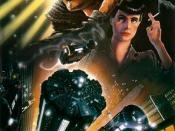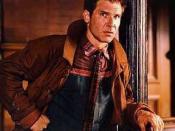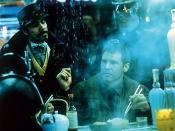When one thinks of the statement ÃÂIn the wildÃÂ, certain images come to mind ÃÂ the shadowy figures cast by an endless canopy shielding out a blazing sun; an unbearable silence, accompanied by soft whistles from birds invisible in their surrounding; the black and yellow stripes of a beast lurking through the pushes, dragging himself along the ground as he gets ready to strike; and an overly tanned, tassel-haired woman with dirt and mud across her face, broken teeth and fierce eyes, and muscles on-par with Tarzans, accompanied by her leopard skin blouse.
The film ÃÂBlade RunnerÃÂ, directed by Ridley Scott, replaces the blanket of trees with a blanket of stars, as the film opens up showing what has become of our Earth in the future ÃÂ an industrialised society, a modern society, but indeed a dreary one. Carrying the theme of a Science Fiction film, Blade Runner gives us an insight to the future, with flying cars, an ÃÂoff-Earth colonyÃÂ, and androids walking the street, and following the classics of robot based science fiction films, taking over the very humans that created them.
On first glance, one might ask how on earth these two topics, the wild and the modernist society can be compared. The themes are not only extremely different, but they are completely the opposite of each other! But rather than looking at the settings and the plots of these two texts, you must look for the underlying message between the statement and the characters in the film. The most striking comparison is of the protagonist Rick Deckard, a retired ÃÂBlade RunnerÃÂ or ÃÂreplicant exterminatorÃÂ. Going back to the image of the tasselled woman in her torn leopard skin rags, Deckard is also seen as a very rogue character, and indeed wild ÃÂ though that...


